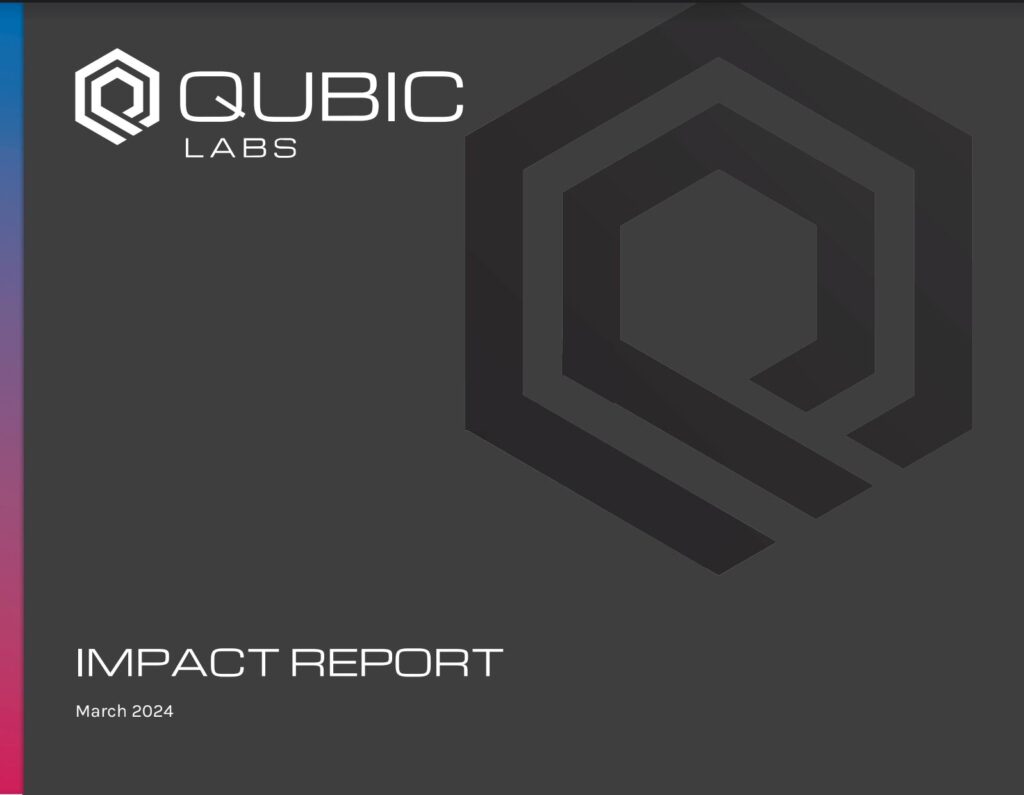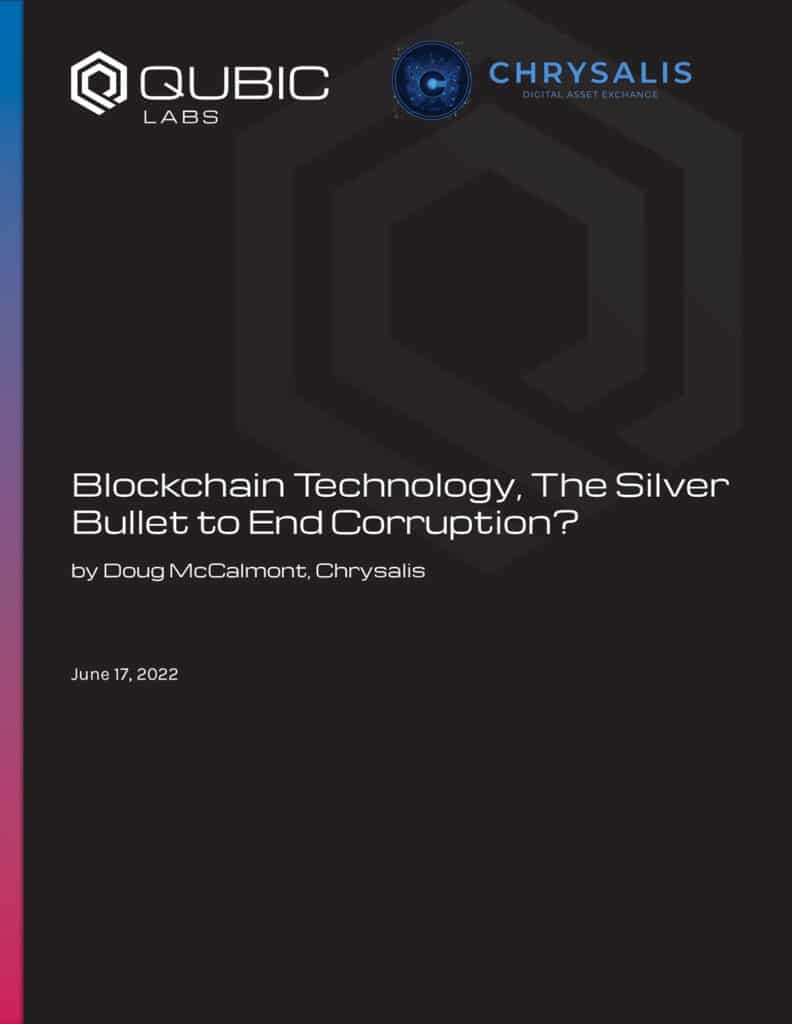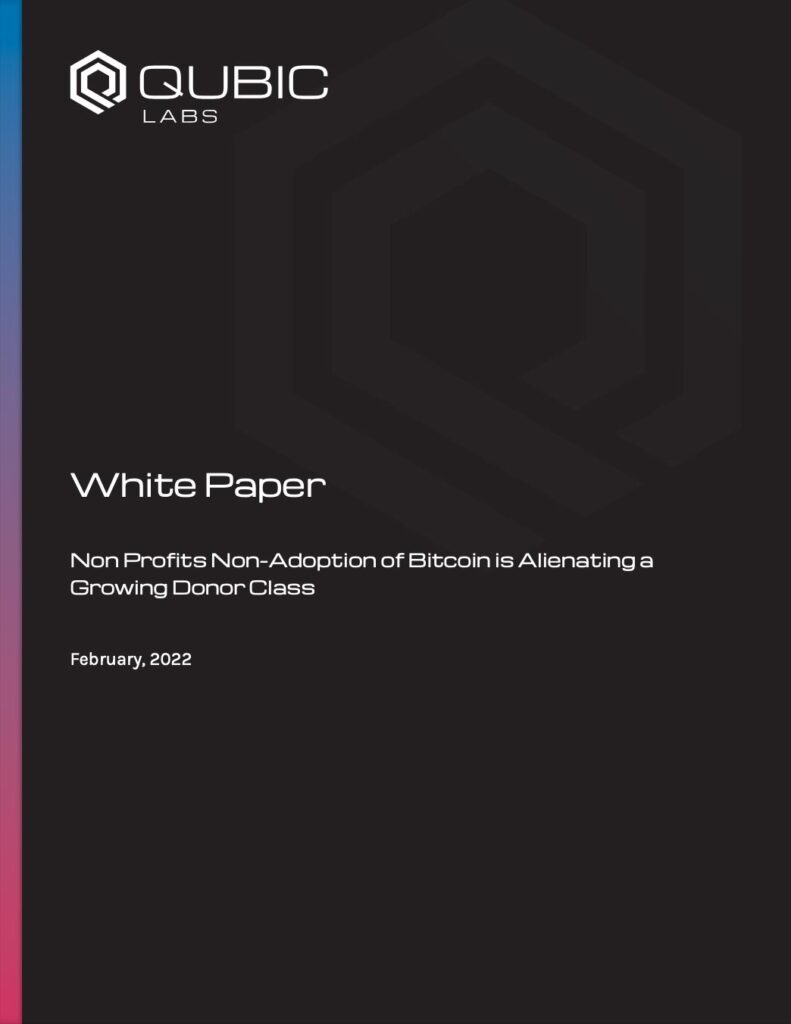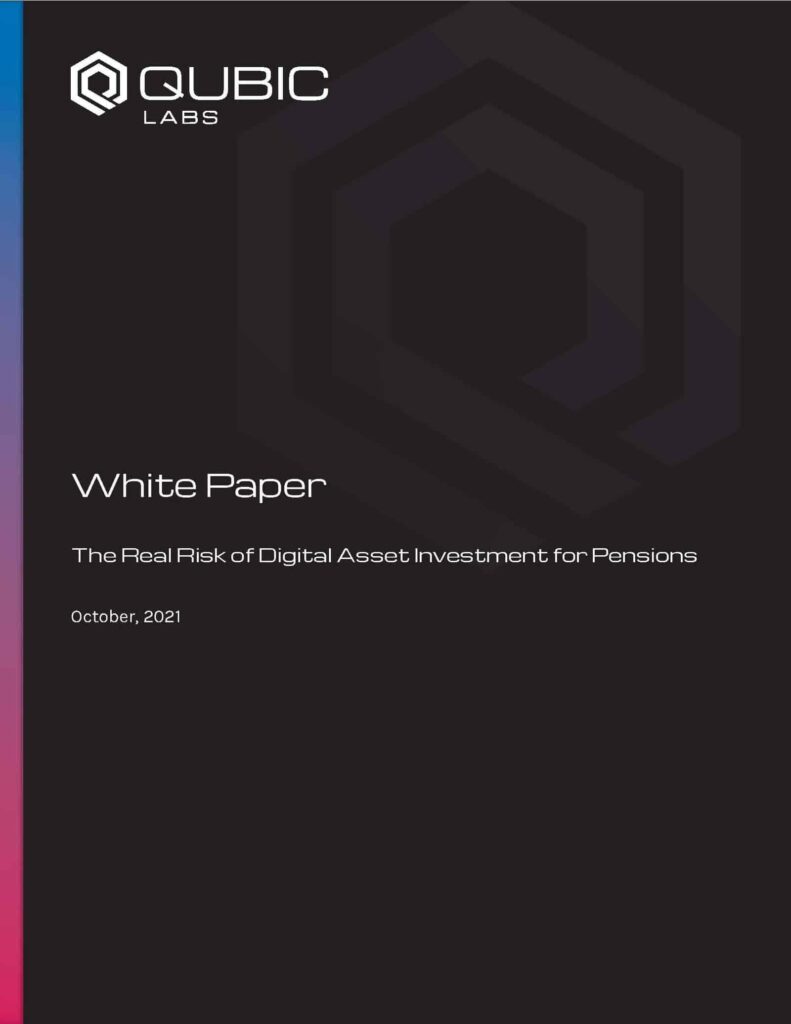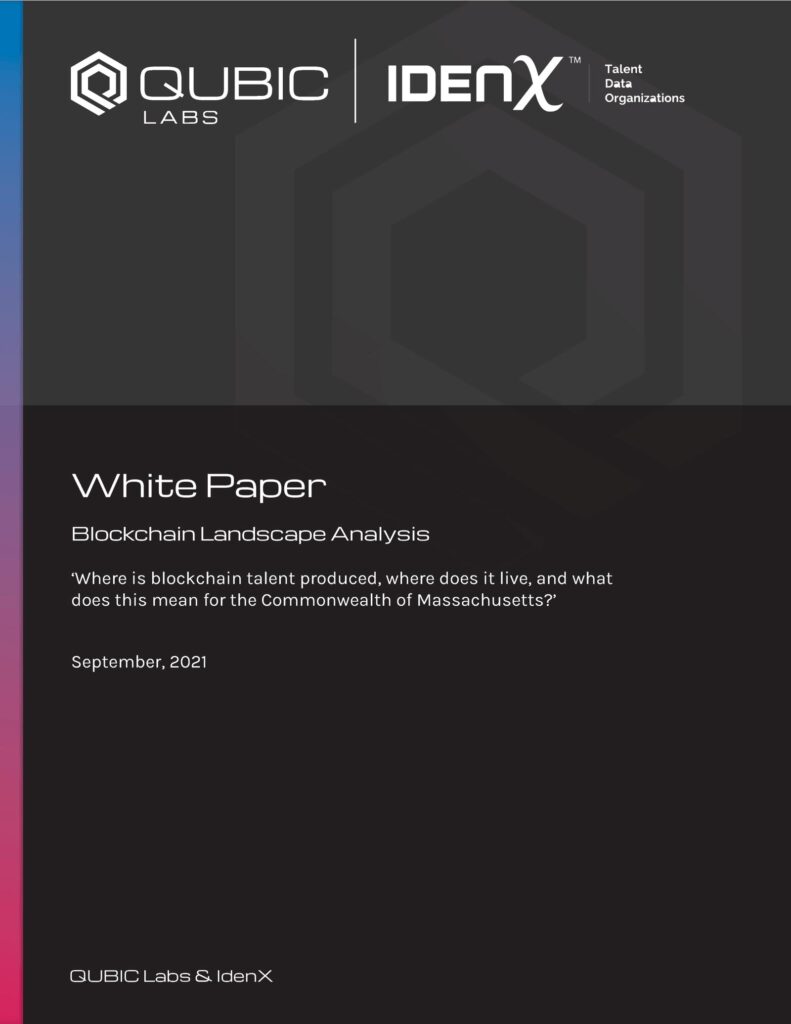Papers
blockchain and Web3 relative to our mission.
QUBIC Labs Impact Report
March 2024
The QUBIC Labs Impact Report is a retrospective from 2019 to 2024, showcasing our work advancing entrepreneurship and innovation in the Greater Boston area. A truly global effort with local impact, headquartered right in Quincy, Massachusetts.
White Paper: Anti Corruption and the El Salvadorian Experiment
June 17, 2022
Concerning anti-corruption, former Secretary-General of the Organization for Economic Cooperation and Develop- ment (OECD) Angel Gurría said “Integrity, transparency and the fight against corruption have to be part of the (mem- ber country) culture. They have to be thought of as fundamental values.”1 Up until 2009, we had to rely upon humans to instill Gurría’s fundamental values. Now, a revolutionary technology call blockchain along with the applications it supports substitutes human oversight with computer code making fundamental values incorruptible by human interference.
White Paper: Non Profits Non-Adoption of Bitcoin is Alienating a Growing Donor Class
February, 2022
Thirteen years into Bitcoin’s existence, numerous entities including federal agencies, elected politicians, and investment banks have confirmed the cryptocurrency’s status as a store of value. As of early November 2021, Bitcoin’s lifetime compound annual growth rate stood at 146%.
One sector which could benefit from the early adoption of Bitcoin payments is the not-for-profit industry. Key nonprofit benefits include more efficient donation collection methods, Bitcoin tax advantages (to both nonprofits and donors), and an increase in the proportion of each donation that reaches the charitable organization. Bitcoin holders are also younger, often 18 to 45, opening new donor segments as potential charity benefactors.
White Paper: The Real Risk of Digital Asset Investment for Pensions
October, 2021
By this point, most Americans have at least heard of Bitcoin, the first cryptocurrency. Created by a pseudonymous inventor in late 2008, Bitcoin’s blockchain technology created an ecosystem for other digital tokens whose collective market cap now equals two trillion U.S. Dollars. Thousands of companies are now implementing blockchain technology in finance, logistics, construction, energy, ESG, and sports, with new sectors coming online all the time.
The road to two trillion was certainly not easy; the space is known for the volatility of the underlying assets. Much of that volatility has been positive as the ten-year Compound Annual Growth Rate (CAGR) is 154%. On the negative side, in 2014 and 2018, Bitcoin suffered 80% retracements from then-all time highs. However, after each setback, Bitcoin rallied to set new high watermarks, inspiring a growing percentage of the populace to believe that the cryptocurrency is not a “Dutch Tulip” style bubble that many professed at the beginning of its short life as an asset class.
White Paper: Blockchain Landscape Analysis
September, 2021
The global blockchain technology market size was valued at $3.67 billion in 2020 and is expected to expand at a compound annual growth rate (CAGR) of 82.4% from 2021 to 2028. As this industry exponentially grows, supply of talent currently does not meet demand.
IdenX and QUBIC Labs (“QUBIC”) established a partnership in 2021 to leverage IdenX’s proprietary data-driven research, analytics, and strategic insight to support QUBIC’s mission around economic development and technology job creation in Massachusetts by creating a globally recognized blockchain hub.
To support this mission, IdenX and QUBIC sought to understand the talent landscape of the burgeoning blockchain industry in the United States – where it is being developed and produced, where the talent goes to work, and where the growth exists. Having identified these attributes, this report also analyses what these findings mean using the Commonwealth of Massachusetts as a case study.

